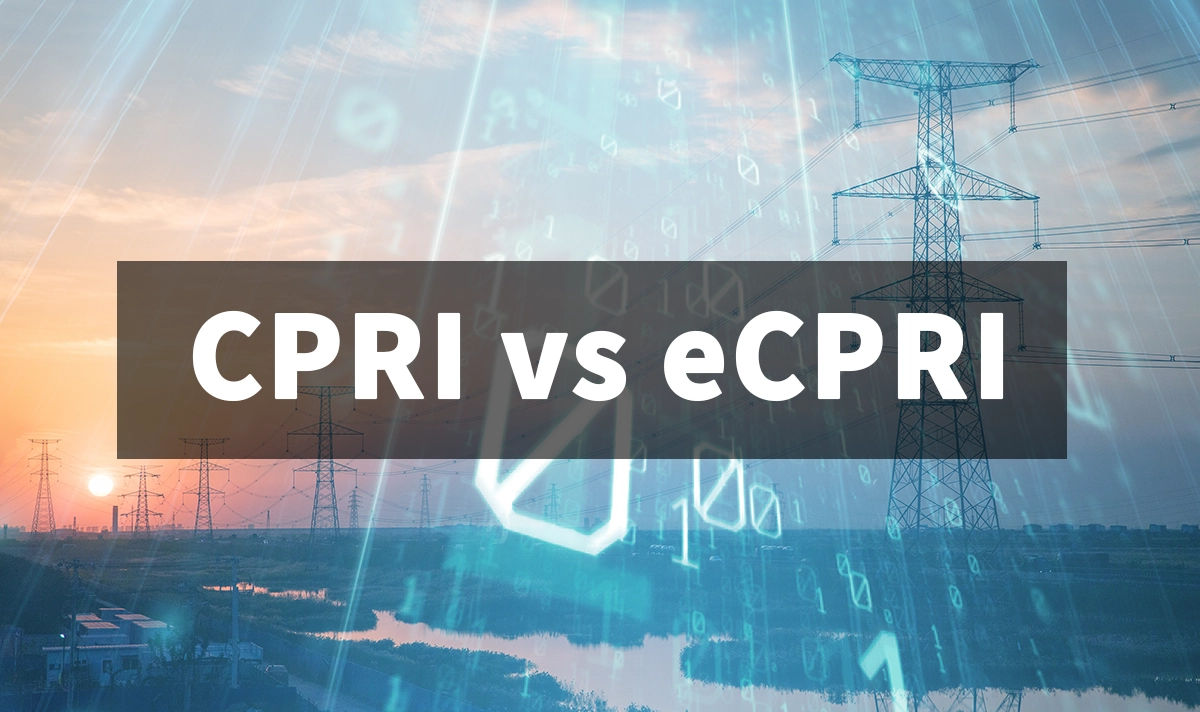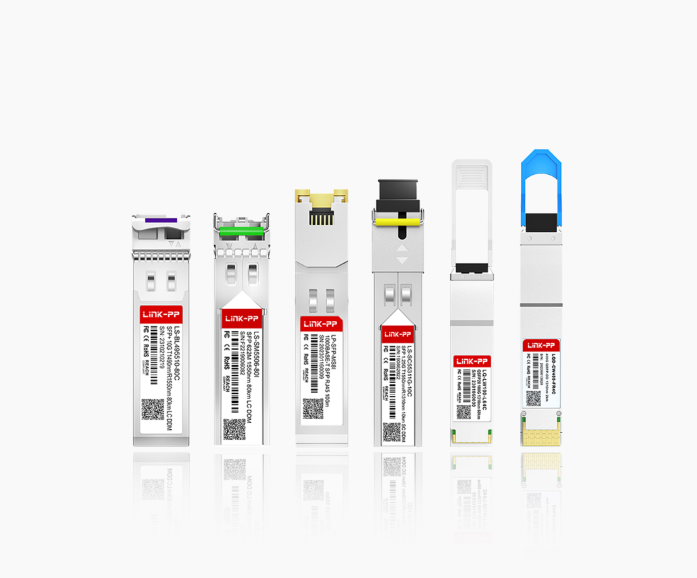
🔄 Introduction to CPRI and eCPRI
In modern mobile networks, particularly as we transition into full-scale 5G and beyond, the term fronthaul describes the link between the centralized/distributed baseband equipment (DU/CU) and the radio unit (RU). Two key standards dominate or influence this link:
Common Public Radio Interface (CPRI) — a legacy interface originally designed for 3G/4G networks.
Enhanced Common Public Radio Interface (eCPRI) — a newer packet-based interface tailored for 5G fronthaul.
This article examines their architectural differences, performance implications (bandwidth, latency, transport), functional-split considerations, and why eCPRI is increasingly adopted in 5G RAN deployments.
🔄 Overview of CPRI
What is CPRI?
CPRI (Common Public Radio Interface) defines a specification for transporting baseband I/Q (in-phase/quadrature) samples between Radio Equipment Control (REC, essentially the baseband processing entity) and Radio Equipment (RE, the radio head) over a fronthaul link.
Key characteristics of CPRI
CPRI uses a time-division multiplexed (TDM), serial interface—dedicated optical cable or electrical link between the REC and RE.
Typical topology: point-to-point (one REC to one RE) or point-to-multipoint (one REC to several REs) only.
Transport network capability is minimal: networking functions (QoS, routing, packet switching) are mostly not part of the CPRI interface itself.
Limitations in the 5G era
While CPRI has served well in earlier wireless generations, it has serious drawbacks when scaled for 5G:
Raw I/Q transport leads to very high fronthaul data rates (especially when applying massive MIMO, large carrier bandwidths) — the fiber/transport capacity becomes a bottleneck.
Rigid functional split: baseband processing is largely centralized, limiting flexibility and efficiency.
Proprietary or vendor-specific implementations often hamper interoperability.
🔄 Overview of eCPRI
What is eCPRI?
eCPRI (Enhanced Common Public Radio Interface) is a packet-based fronthaul interface specification introduced circa 2017 by multiple telecom vendors to address 5G fronthaul demands.
Key characteristics of eCPRI
Packet transport: eCPRI uses Ethernet/IP/UDP or MAC layer packet networks rather than only a dedicated serial link.
Supports more flexible functional splits inside the PHY layer of the RAN (e.g., between DU and RU) thereby reducing transported data rates.
More flexible topology: supports point-to-point, point-to-multipoint, and multi-point-to-multi-point connections in the fronthaul network.
Designed for scalability, vendor interoperability, and cost-effective deployment with standard networking equipment.
🔄 Direct Comparison – CPRI vs eCPRI

Transport Medium & Topology
Feature | ||
|---|---|---|
Transport medium | Dedicated serial/optical link, TDM-based | Packet switched Ethernet/IP/UDP or MAC layer |
Topology | Mainly point-to-point or point-to-multipoint | Point-to-point / point-to-multipoint / multipoint-to-multipoint |
Networking functions | Minimal; interface mostly static | Full transport network support (switching, QoS, redundancy) |
Bandwidth & Efficiency
eCPRI dramatically reduces fronthaul bandwidth requirements compared with CPRI by leveraging functional split and packet-based transport. For instance, it is often cited that eCPRI can reduce required bandwidth to about one-tenth of what CPRI would demand in similar conditions.
Functional Split Flexibility
CPRI has a relatively rigid split (essentially raw I/Q sample transport), which limits flexibility. In contrast, eCPRI allows many different functional-split options (like 7.x in 3GPP TR38.801) which allow shifting more baseband processing toward the DU, relieving the fronthaul.
Latency, Jitter & Synchronization
Both interfaces must meet strict latency and synchronization demands because of radio processing, but eCPRI’s packet transport introduces additional design requirements (e.g., jitter control, packet sequence integrity, PTP timing) that the network must support.
Vendor Interoperability and Openness
CPRI implementations often became proprietary and vendor-locked, limiting multi-vendor interoperability. eCPRI was designed to better support open RAN deployments and reuse of standard networking infrastructure.
Cost and Deployment Implications
Because eCPRI uses standard Ethernet/packet switching hardware, it offers potential cost savings over the proprietary links typical in CPRI. That said, migrating to eCPRI may require new transport equipment, synchronization mechanisms, and network redesign.
🔄 When to Use CPRI vs eCPRI? Practical Considerations
Use Cases where CPRI is Still Viable
Despite its limitations, CPRI remains viable in scenarios such as:
Legacy 4G or early 5G deployments where the fronthaul link is simple and capacity demands are modest.
Sites where a dedicated link is already in place and upgrading to packet fronthaul is not cost-effective.
Use Cases Favoring eCPRI
eCPRI is preferred when:
Deploying 5G networks with massive MIMO, wide carrier bandwidths, high sector counts—leading to high fronthaul traffic.
Implementing centralized RAN (C-RAN), distributed unit (DU)/radio unit (RU) splits, virtualization and open RAN architectures.
Transport networks already use Ethernet/IP and desire to reuse standard components.
Migration & Hybrid Scenarios
Many operators migrate gradually—keeping CPRI for some sites while deploying eCPRI for new 5G builds. Fronthaul gateways or conversion layers may support legacy CPRI while connecting to packet networks.
🔄 Impact on LINK-PP Products & Fronthaul Connectivity
From the perspective of connectivity hardware providers like LINK‑PP, the shift from CPRI toward eCPRI implies new product design and qualification requirements:
Optical modules (e.g., 25G SFP28, 40G QSFP+, 50G QSFP28 ) and Ethernet transceivers suited for packet fronthaul.
RJ45 Connectors and high-speed Ethernet interfaces compatible with fronthaul transport.
Ensuring low latency, minimal jitter, high reliability modules that meet the packet-based eCPRI network demands.
Supporting open ecosystems and interoperability, which aligns with multi-vendor open RAN deployments using eCPRI.
By aligning products toward eCPRI-capable fronthaul, LINK-PP ensures relevance for 5G/6G network roll-out scenarios rather than being locked into legacy CPRI-only use cases.
H2: Summary & Outlook
In summary:
CPRI is a mature fronthaul interface suited to earlier mobile networks (2G/3G/4G) and some initial 5G deployments, but it struggles with the bandwidth, flexibility and cost demands of full-scale 5G.
eCPRI represents the future of fronthaul: packet-based, scalable, flexible, cost-efficient, and aligned to open RAN and virtualization trends.
For network operators, the shift to eCPRI enables better reuse of Ethernet infrastructure, reduced fronthaul bandwidth, and more flexible functional splits.
For component and module vendors (such as LINK-PP), ensuring product compatibility with eCPRI transport and 5G alignment is critical to stay competitive.
As networks continue evolving toward 6G and disaggregated RAN architectures, the distinction between CPRI and eCPRI will become even more pronounced—making early adoption of eCPRI-based designs a strategic advantage.




